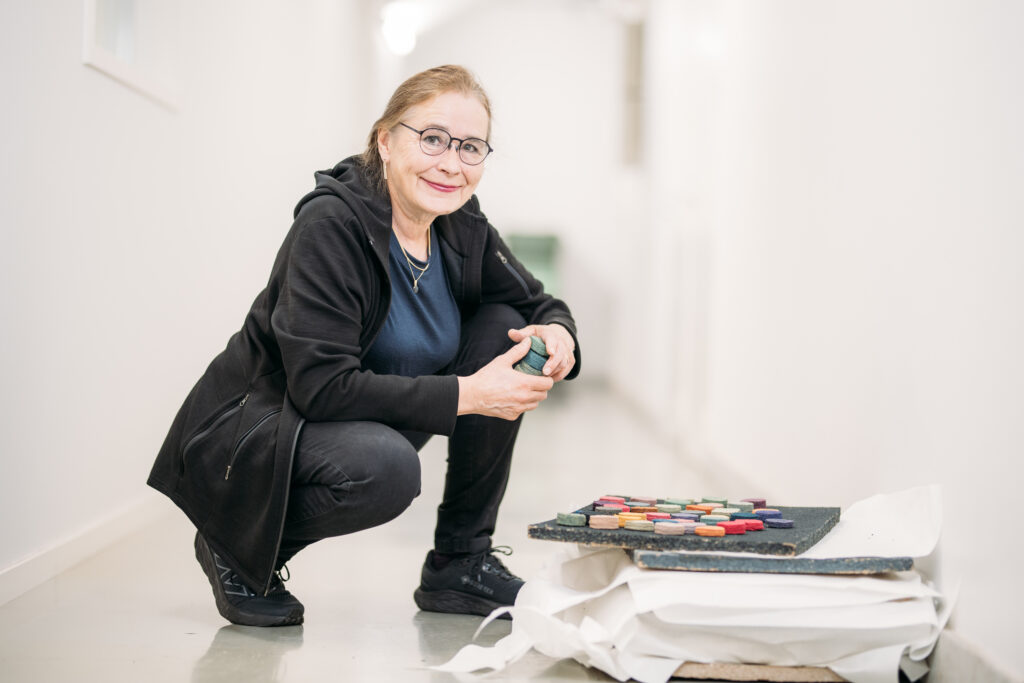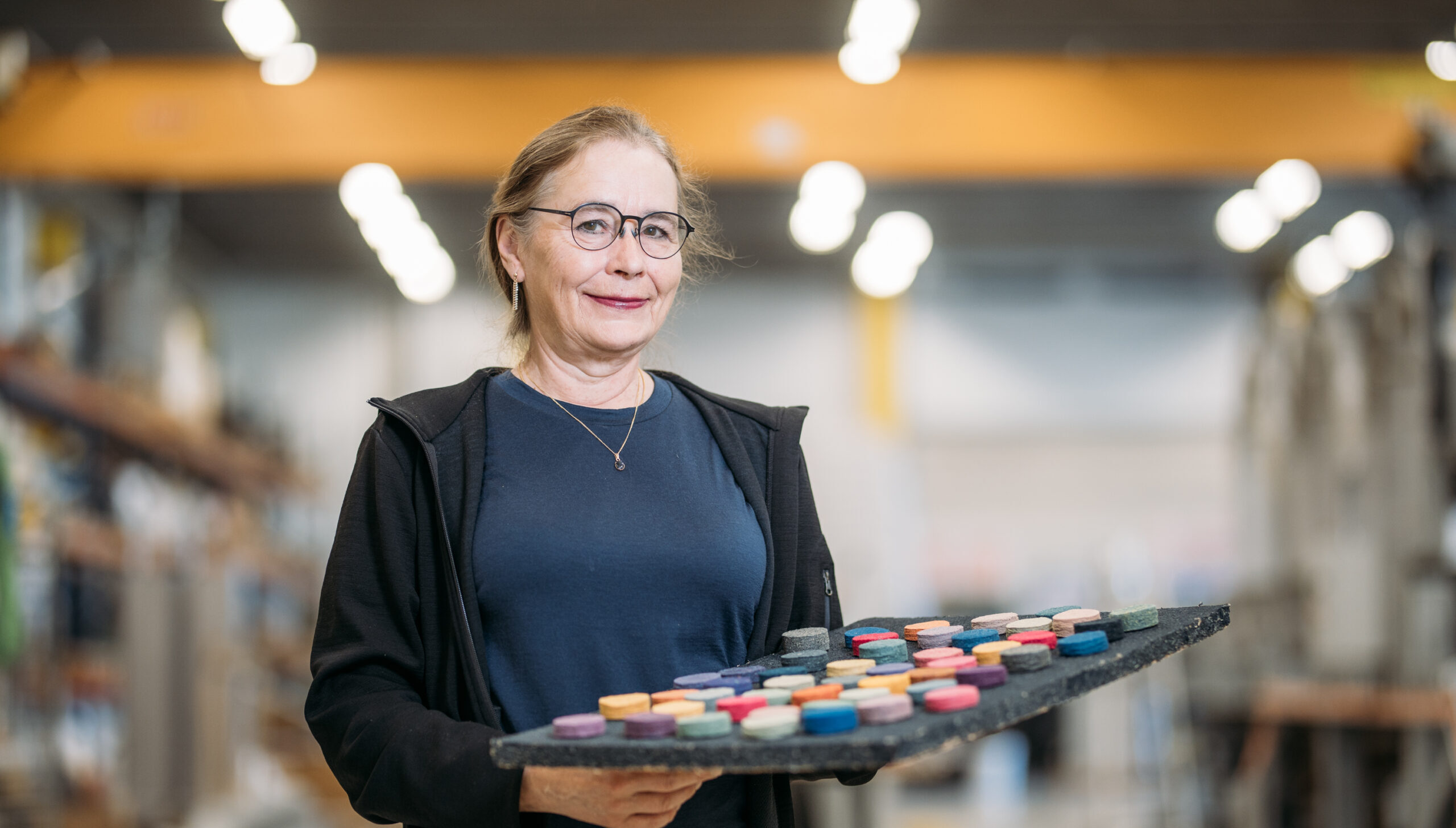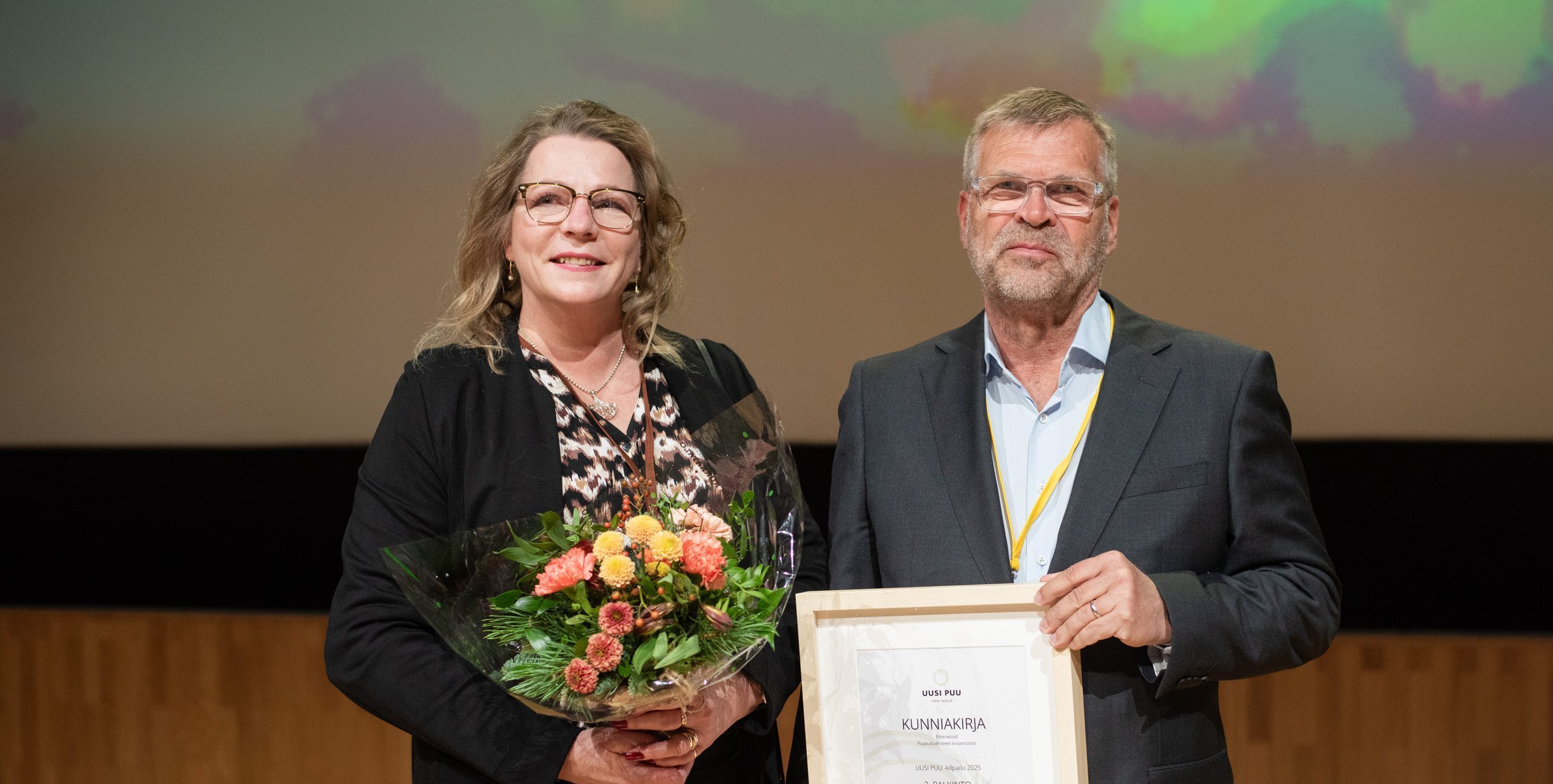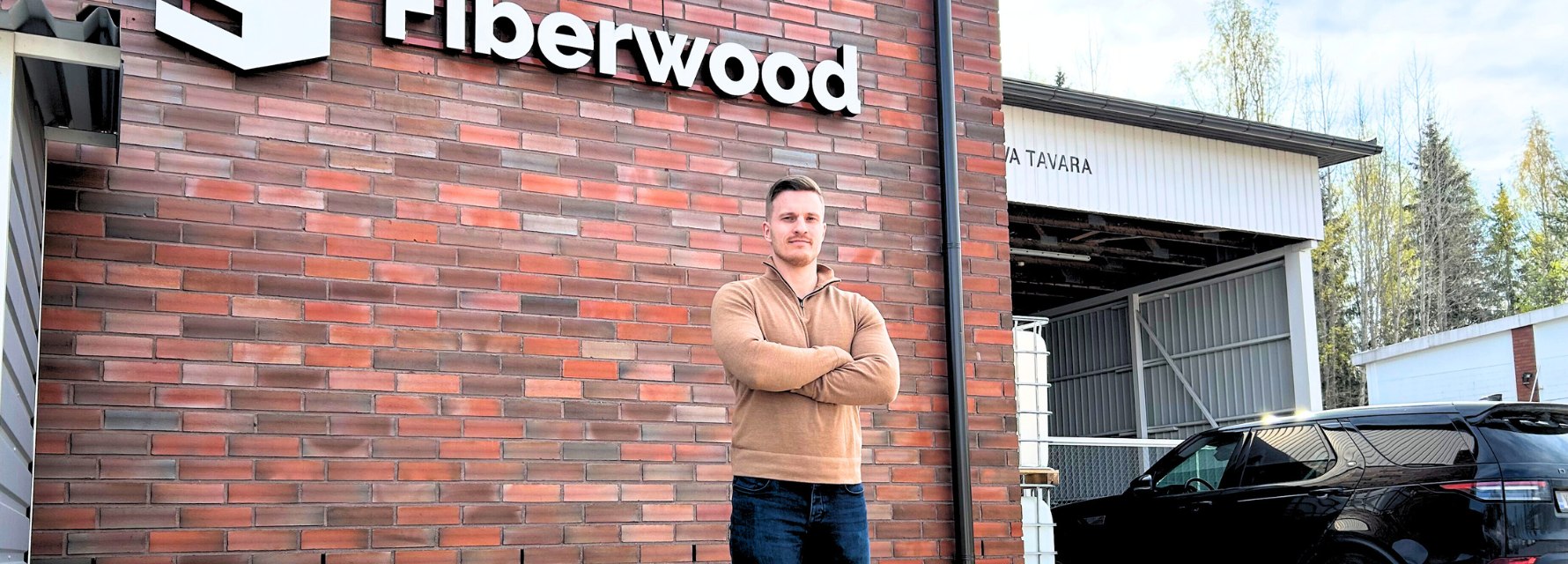Doctor of Arts and designer Tiina Härkäsalmi is shaping future interior solutions at Fiberwood. Made from forest industry byproducts, the material enables the creation of products that enhance the acoustic and aesthetic quality of public spaces.
Tiina Härkäsalmi presents her colour palette with enthusiasm — it looks just like the watercolour trays from school days. The day before, she created 21 different shades of dyed fibre from the three primary colours: red, blue and yellow.
The prototypes are part of the product development for acoustic panels made from Fiberwood’s material. Härkäsalmi, who holds a Doctorate in Art in the field of design, has worked in material research and product development, with a focus on biomaterials and the circular economy. She is currently developing a range of interior products for public spaces — a collection that combines recyclable natural fibres, visual appeal and technical performance.

Exploring the Material’s Potential Through Rapid Prototyping
At Fiberwood, Härkäsalmi experiments with fibres, dyeing techniques, 3D forms, and textures. True to her design-driven approach, the visual and functional qualities of the products emerge through countless prototypes.
“I’m fascinated by what materials can do. Technical properties matter a lot. I want to quickly screen what works and what doesn’t — where the potential lies,” Härkäsalmi explains. “I also constantly think about the product’s entire life cycle and its cost-efficiency,” she adds, admitting she’s also a bit of a spreadsheet enthusiast.
Fiberwood’s materials are based on wood fibres derived from the side streams of the forest industry. The foam forming process makes it possible to blend fibres of different colours. Härkäsalmi uses a through-dyeing technique, where pigment is blended directly into the fibre pulp. The result is a durable, vibrant surface where scratches and dents remain invisible. Because the colour runs throughout the material, cut edges appear finished and do not require further treatment.
“Current plastic- and fibre-based products usually have a painted surface. Scratches and cut edges make them look worn and unattractive. Customers are looking for better, recyclable alternatives.”
Härkäsalmi is also excited about the potential for creating 3D forms and textured surfaces:
“We’ve produced a few test moulds and experimented with the kinds of surfaces we can make. A 3D shape increases the sound-absorbing surface area, so the form can also serve a functional purpose,” she explains.
Recyclability is the starting point for the design, but there can be no compromises on quality. The product has to serve the end user for as long as possible. For example, an acoustic panel must be able to withstand exposure to light.
In her design work, Härkäsalmi also anticipates upcoming EU ecodesign regulations and producer responsibility requirements for furniture. Customers are increasingly aware of the many implications of a product’s life cycle.
“Smart use of materials is also economically sensible. Disposal as mixed waste is a significant cost for customers.”

From Panels to Complete Solutions
Tiina Härkäsalmi’s ambition is that, in time, Fiberwood’s materials will be used to create fully integrated solutions. She imagines acoustic products delivered as ready-made systems — including frames, hanging mechanisms and all necessary components — all made entirely from Fiberwood’s materials. The products will be easy to install, light to handle and recyclable for reuse after their initial lifecycle.
“I feel that nowadays there are many open spaces filled with noise and disturbance, which is a health issue. It’s well established that soundscapes affect things like people’s ability to concentrate and their well-being at work,” Härkäsalmi says.
Beyond appearance and functionality, these solutions also support human well-being. Quieter soundscapes improve comfort in schools, hospitals, restaurants, workplaces and other public spaces.
The orange, purple and violet samples on Härkäsalmi’s tray look almost like sweets. She smiles and says it’s just the beginning:
“Colour, combined with a material made from industrial side streams, offers a great opportunity. With just a few primary colours, we can create an almost unlimited range of tones.”
Rather than chasing trends, Härkäsalmi keeps a close eye on the market and her surroundings, always looking for gaps where better solutions could emerge. Occasional art projects also spark ideas for product development.
“The essence of my work is to find solutions that truly serve the user and stand the test of time — to create spaces that are both aesthetically compelling and acoustically calm.”




